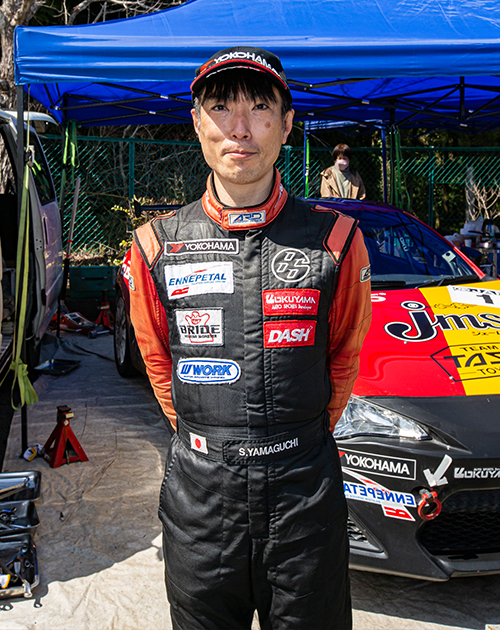Enapetal ADVAN Kuyo GR86
山口 清司
KIYOSHI YAMAGUCHI
Car:Enapetal ADVAN Kuyo GR86
ZN8
Wheel:M.C.O RACING
Rally

2024.07.07
2024 JAF All Japan Rally Championship (JRC) Round 6 2024 ARK Rally Kamui
2nd in JN3 class
2024.04.28
2024 JAF All Japan Rally Championship (JRC) Round 3 Kumakogen Rally
JN-3 Class Winner
2022.03.29
2022 All Japan Rally Championship Round 1 Shinshiro Rally 2022
JN3 class 3rd place
2021.10.20
2021 All Japan Rally Championship Rd.10 M.C.S.C. Rally Highland Masters
JN3 class 3rd place
2021.07.19
2021 All Japan Rally Championship Round 7 2021ARK Rally Kamui
JN3 class 2nd place
2021.06.13
2021 All Japan Rally Championship Round 6 Monterey 2021
JN3 class 2nd place
2019.08.09
JAF All Japan Rally Championship Round 6 2019 Sammy ARK Larry Kamui
JN3 class third place
2017.10.26
2018 All Japan Rally Round 9 M.C.S.C.Highland Masters 2018
JN4 class champion
2017.07.05
2017 All Japan Rally Championship Round 6 [2017 ARK Rally Toya]
JN4 class third place
2017.06.14
2017 All Japan Rally Championship Round 5 Monterey 2017 in Tsumagoi
JN4 class second place
2017.05.26
2017 All Japan Rally Championship Round 4 "Wakasa Rally 2017"
JN4 class third place
2016.10.18
2016 All Japan Rally Championship Round 8 Highland Masters 2016
3rd place in JN4 class
2016.06.12
2016 All Japan Rally Championship will do our best fourth round! Fukushima MSCC rally 2016
JN4 class second place
2016.05.22
2016 All Japan Rally Championship Round 2 Kumakogen Rally Supported by Sammy
JN4 class third place
2016.05.01
2016 All Japan Rally Championship Round 2 Kumakogen Rally Supported by Sammy
JN4 class first place
2016.04.10
2016 All Japan Rally Championship first round of Tour de Kyushu 2016 in Karatsu Supported by Sammy
JN4 class second place
2025.07.15
2025.06.18
2025 JAF All Japan Rally Championship Round 4 Kase Yuji Cup MONTRE 2025
2025.05.27
2025 JAF All Japan Rally Championship Round 3 YUHO Rally Asuka Supported by Toyota United Nara
2025.04.18
2025 All Japan Rally Championship Tour de Kyushu 2025 in Karatsu
2025.03.12
RALLY Mikawa Bay 2025 Supported by AICELLO& MORIZO Challenge CUP
2024.08.02
2024.06.21
2024 JAF All Japan Rally Championship (JRC) Round 5 “Yuji Kase Cup MONTRE 2024”
2024.05.10
2024 JAF All Japan Rally Championship (JRC) Round 3 “Kumakogen Rally” Winner in 2 classes